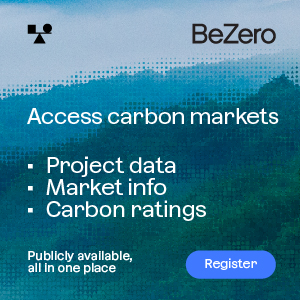The US and Brazil on Tuesday both agreed to increase the share of non-hydro renewables in their electricity generation mixes to 20% by 2030, while Brazil outlined some of its UN climate pledge that some observers said fell short of existing commitments.
“For the United States, this will represent nearly a tripling of the current share of non-hydro renewables in the grid, and more than a doubling for Brazil,” said a joint statement.
The announcement was made while Brazil’s president Dilma Rousseff met US President Barack Obama in Washington. The two leaders released a wide-ranging joint statement that included agreements on agriculture, education, trade and defense cooperation.
In a preview of Brazil’s INDC, the statement said the country’s pledge would include policies for the forestry, land-use, industrial and energy sectors, and will represent Brazil’s “highest possible effort beyond its current actions”.
Brazil will restore and reforest 12 million hectares – an area the size of England – by 2030 and pursue policies aimed at eliminating illegal deforestation, it added. In the later press conference, Rousseff said this would also happen by 2030.
Environmental groups both at home and abroad are calling for Brazil to set a target date to reach zero net deforestation in its INDC, but have voiced fears over a greater amount of legal logging permitted under the country’s revamped forestry laws.
FRUSTRATES OBSERVERS
Tasso Azevedo, a Brazil-based forestry and climate consultant, was frustrated by the lack of any emission reduction target to ensure Brazil’s policies delivered.
“The sum of the two (forestry) commitments is far below the goal of zero loss of forest cover by 2015 envisaged in the National Plan on Climate Change, 2008,” he wrote in a blog post on his personal website.
He added that the 2008 plan already obliged the government to restore 24 million hectares of forest by 2015. Since 1970, Brazil has deforested some 750 million hectares, mainly to clear for farming, and is still chopping trees down at a rate of around 5 million hectares a year.
Timmons Roberts of US think tank the Brookings Institution said today’s announcements lacked key details including policies on transport emissions and the largely untapped offshore oil and gas reserves.
“At first blush, the numbers in the joint announcement sound decent, but looking closer, the devil is in the details,” he said in a post on Brookings’ website.
Last week the Brazilian Climate Observatory, a coalition of Brazilian civil society groups, published a proposal for the nation’s INDC that prioritised freezing the expansion of fossil fuels and increasing solar, biomass energy, and wind energy generation.
“We think it merits consideration by Dilma’s administration and the Brazilian Congress,” said Roberts.
The US and Brazil statement referred to the launch of a ‘Joint Climate Change Initiative’, including a ‘Climate Change Working Group’ that will focus on enhancing cooperation on sustainable land use, clean energy, and climate adaptation.
The two nations also vowed to continue cooperation on biofuels for aviation.
By Ben Garside- ben@carbon-pulse.com



